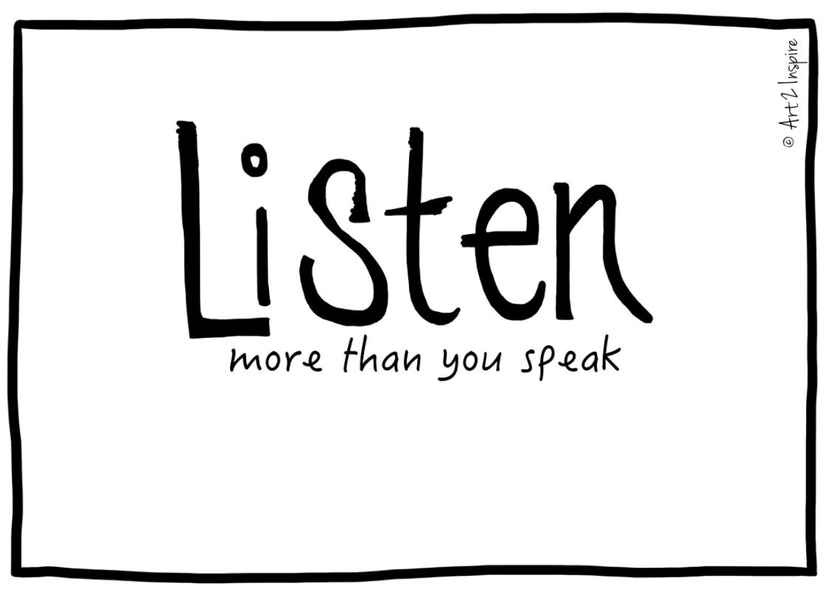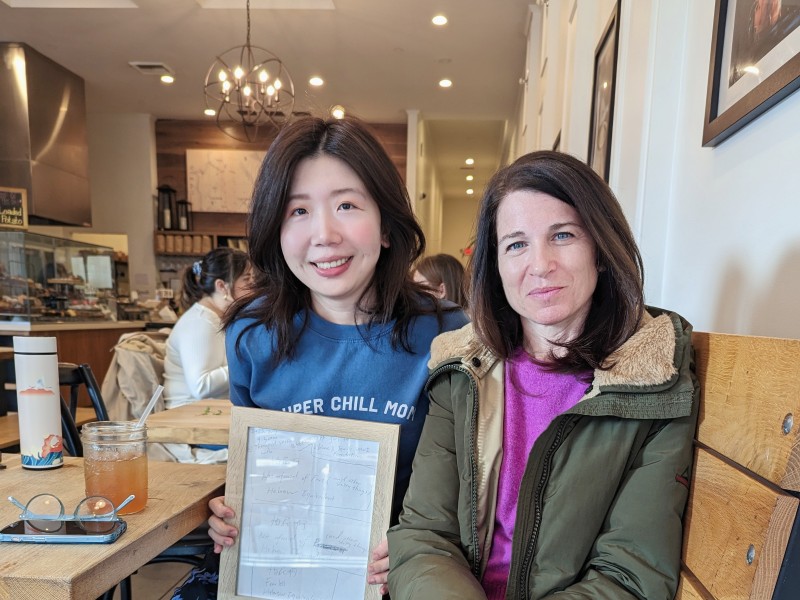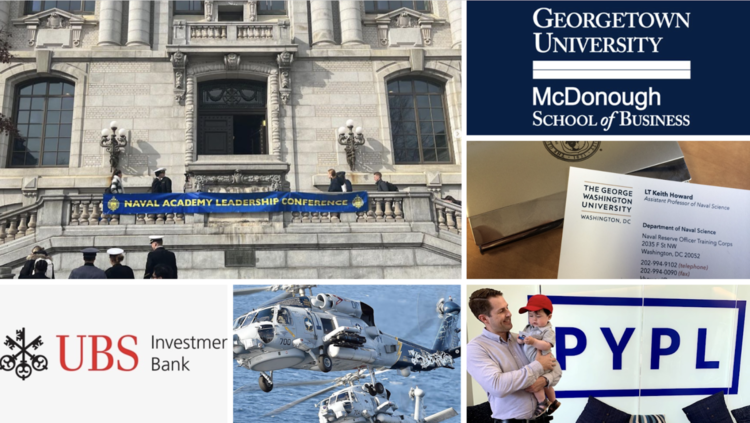Subscribe at https://www.linkedin.com/pulse/serve-your-workplace-speaking-up-yiyang-hibner

Guest Post Author: Yogi Sharma
I was a timid child and always tried to please my dad. After his second marriage, my tendency to please evolved into a fear of upsetting our family's unstable equilibrium. It was only after my stepmother’s death, my dad’s second re-marriage, and my deteriorating relationship with my second stepmother that I realized I was drowning in emotional turbulence.
It was a dark and cold December night. I wanted to speak up to my stepmom. In the small Northern India village I grew up in, the dew from mustard fields outside made the air unusually cool, but the anxiety in my chest and choking feeling in my throat were so overpowering that my palms sweat and my body burned. I could feel the tension in the air, that palpable tension I’d felt ever since she had arrived -- a perpetual ceasefire that could erupt into war any time. The cause of that tension? A seemingly simple one: My dad insisted that we call our stepmom मम्मी (mummy). I insisted on not calling her that. I reserved it for my late mother, who had died a decade earlier. This seemingly simple issue had caused us to go from strangers to passively hostile.
I had chickened out of talking to her several times before (did I mention I dislike conflicts?), and I was feeling both the fear of having the conversation and the fear of chickening out yet again. The walk from my room to the verandah seemed long, as long as the lead up to this conversation, which was three years in the making.
Speaking up is hard. Confrontations are hard. Uncomfortable conversations are hard -- in the short term. And for several good reasons.
But, letting resentment simmer is harder in the long run. Getting on the same page with people by having uncomfortable conversations is incredibly rewarding for our career and emotional health. I am not courageous, but I learned to be comfortable with uncomfortable conversations. With simple and consistent practices of reframing our thoughts, words, and actions, we all can become better at speaking up. And trust me, it is worth it.
Why don’t *we* speak up?
Why did I not speak up and have that conversation with my stepmom years before?
Or perhaps a more relatable example: why did I not speak up to my manager when he misrepresented my work and threatened to fire me? In a small, dark cubicle, the two yellow couches we sat on were comfortable. But the news he gave me was far from comforting.
“Yogi, you are not meeting expectations for your job. You’d better get your act together,” he said.
I felt suffocated, not from the lack of space but from the lack of understanding.
“But I finished one of the two big projects I committed to, and we are exactly halfway through the year. What do you mean?” I somehow mumbled.
“Yeah, if you don’t get your act together, I will have to go [be fired], and I won’t go alone [I will fire you before I go].” He closed the discussion.
I was stunned. I felt deceived. I knew I was doing well but did not know how to begin to express that. My thoughts raced. I would be fired from my job. My visa would be revoked. I would be kicked out of the country. It is hard to speak up in such a state of mind!
We don’t speak up because there is a lot at risk when we are engaged in a conflict -- at least to our lizard brain [1]. Speaking up can lead to overt conflict. The other person might think we are selfish and disapprove of us. We have evolved to avoid disapproval and selfishness because, in tribal times, these behaviors could lead to severe consequences [2]. The brain we have evolved with has not changed significantly for the last ten thousand years [3], so our primal lizard brains are still wired to avoid overt disapproval. In fear of repercussions, it is easier to keep quiet.
We don’t speak up because speaking up opens us up to being wrong and loss of respect. If we stand up for something, we feel we need to defend it. We might feel ashamed or lose self-respect if we are not able to. In my experience, speaking up with a reasoned mind (not as an emotional outburst) requires me to think through the situation from another's point of view. It is hard to do when a tense situation has endured for a long time. Many times, I start to speak up about something that has bothered me for a long time, only to realize that I cannot respond to small challenges from the other side. Preparing for a difficult conversation is homework. Lacking the time and energy, it is easier to keep quiet.
We don’t speak up because any issue that is worth disagreeing about is complicated. It is hard to untangle such situations over a single conversation. Our desire to see tangible results makes it hard even to initiate such conversations, which sometimes spread over several weeks or months. It just seems easier to keep quiet.
These factors were at play when I could not speak up to my manager. I was afraid of losing my job. I did not have the resilience to defend my work. The manager-employee power-play made the situation more complex. I did not know where to start. So, I froze and left utterly dejected.
With my stepmom, I was afraid of the situation getting even worse, I did not know where to start as the situation had festered for many years, and I did doubt myself -- maybe I was the one at fault. So, I had just kept quiet.
Speaking up is worth it
Speaking up is hard, but it is essential for a healthy professional career and for personal well-being.
Research has shown that speaking up and not letting issues fester leads to less stress, increased productivity, better collaboration, and overall successful teams. Speaking up and lively participation reduce stress at work and in our personal lives [6].
Reduced stress and burnout resulting from honest communication also lead to improved work performance [7], trusting professional relationships, and effective collaboration.
In his book Principles [8], Ray Dalio points out how a culture of radical transparency and improved communication leads to better employee performance, improved revenue, and fewer errors in the long run. In particular, he suggests doing this by “creating an environment in which everyone has the right to understand what makes sense and no one has the right to hold a crucial opinion without speaking up.”
That being said, there are some real risks to speaking up if the other side (especially if there is a power difference) simply does not want to understand. Jocko Willinks in his book Leadership Strategy and Tactics [10] mentions that such a situation is rarer than it first appears, but suggests that in such a case, it is worth cutting your lossnes and leaving the job -- respectfully.
Learning to speak up
We now know that speaking up is as valuable as it is hard. How do we actually do it?
Here is a three-pronged approach to speaking up when doing so is uncomfortable: clarifying thoughts, words, and actions. These are about reframing uncomfortable conversations (thoughts), preparing for them (words), and taking tiny steps to move them forward (actions). Anyone can master these steps with consistent practice in situations big and small.
1. Reframe your thoughts
Thinking of difficult conversations as signs of disapproval, selfishness, and disrespect makes them hard to have. These impressions come from our lizard brain and are not as likely or damaging in the modern world -- a place in which the lizard brain did not evolve.
An empowered way to view speaking up is to honestly serve the relationship and team, searching for a win-win resolution creatively and showing people you respect them enough that they deserve the truth. I have seen people leave teams because they were not willing to speak up for what they wanted. That does not serve anybody. By speaking our truth and being determined to find mutually beneficial resolutions, we can creatively turn “1 and 1 into 11.” [4].
Speaking up is about truly respecting people and coming up with common ground in a kind way. It is easier to give up on somebody and view them as an adversary but more rewarding to understand them, find common ground, and view them as allies. Speaking up is generally viewed as an act of aggression, unkindness, and disrespect. But we can talk about our disagreements with kindness and respect, which takes some difficulty out of a difficult conversation. A popular blogger and speaker and an inspiration of mine, Steve Pavlina, improved his public speaking with dramatic effects when he started to view the audience as his allies, not adversaries [9]. He started to “speak with them” instead of “speak to them” in his speeches. If he can speak with a crowd, surely we can speak with one person.
Once I reframed my thoughts about the conflict with my manager by viewing it as a service to my team (others were being harassed similarly) and approached it with respect and kindness, the subsequent conversations were made much easier.
2. Reframe your words
Even when we have all the right intentions, our words matter. If the conflict at hand has been festering in our minds for a long time, resentment typically builds up and turns our thoughts into a convoluted mess. Speaking up from such a state of mind is not a recipe for resolution, as our frustration is reflected in verbal and non-verbal communication.
To have a genuine conversation, it is useful to untangle the situation privately first, at least a little bit, by writing and journaling. Prepare the outline of communication and some phrases you want to say in a conversation. Keep that piece of paper with you, letting the other party know that this conversation means a lot to you and you have prepared. For difficult conversations, I collect 3-5 bullet points about what I want to talk about, write them on a piece of paper to keep them handy and tick those bullets off during the conversation to keep myself on track. You can use these notes to write some phrases to use, ideas to bring up, and a general outline of the conversation. It does not make a difficult conversation a piece of cake, but it makes it much more doable.
3. Reframe your actions
Even when we have the right mindset and preparation, the road ahead for most uncomfortable conversations is not clear. It takes two to tango after all.. The end goals of speaking up are lofty (e.g., meaningful career and honest relationships), but they can be uncertain and so far in the future that it can create hopelessness in us. To untangle a complex situation, it is helpful to start small and concrete. For example, if someone has been disrespectful to me for a long time, it is hard to start the conversation with this abstract concept. It is more productive to start with something small, for example, something specific that they said or did. Conflict resolution is a marathon, not a sprint.
Bill Gates observed: “We underestimate what we can do in ten years, but we overestimate what we can do in a week.” A single conversation happens in a moment in time, and it isn't reasonable to expect a lot from just that conversation. So, learn to appreciate whatever amount gets accomplished in one conversation, as Mahatma Gandhi pointed out when he said: “Whatever you do will be insignificant, but it is very important that you do it.”
When we arm ourselves with a reframing of thoughts, words, and actions, or rather disarm ourselves and become vulnerable through these reframes, uncomfortable conversations are bound to become much more doable.
What next?
I was unwilling to have difficult conversations with my stepmom and manager because I feared making things worse, losing my job, or losing my relationship, but such fears are typically false alarms.
I proposed to my stepmom that I call her मौसी (mausi: a word for mom’s sister or close friend), not mummy. She was absolutely fine with that. She wanted to reduce the tension as much as I did, if not more. Our actual conversation lasted about three minutes, and I could see the relief on her face. She was burning in the same hellfire, just on the other side of the emotional barrier we had erected between us. Now, 16 years later, you would have a hard time telling that she is not my biological mother.
After a few days of wallowing in my own anxiety, fears, and tears, I reframed my thoughts and decided to speak up with my manager too. To reframe my words, I collected different viewpoints of my work performance from peers and corrected my own perception. I started small in our communication by letting him know that his assessment was not accurate. After 4 months of back and forth, I ended up getting a rating of 6/7 (greatly exceeds expectations) instead of the initially proposed 3/7 (meets most expectations). The success of my speaking up went much further: my manager started to respect me more and asked me for advice and input on many things relating to our team.
Despite the value of speaking up and research supporting the benefits of honest communication, we all continue to have disempowering beliefs about uncomfortable conversations. But these beliefs don’t have to hold us hostage. We can become aware of them, acknowledge them, and then reframe our thoughts, words, and actions to “feel the fear and do it anyway.” [12]
As Tim Ferriss points out: “A person's success in life can be measured by the number of uncomfortable conversations he or she is willing to have.” [11] Are you ready for the next level of success by learning to approach uncomfortable conversations? Speaking up is not only a service to yourself, but also to the people around you and to the world at large. So, let us help build a more empathic world, one conversation at a time.
References
[1] The Lizard Brain is the most primitive part of the brain that has evolved over millions of years. It is responsible for our fight and flight response. https://www.psychologytoday.com/us/blog/where-addiction-meets-your-brain/201404/your-lizard-brain
[2][...] “groups with a strong sense of unity and identity can benefit from kin selection behaviour such as common property and shared resources”, from https://en.wikipedia.org/wiki/Tribalism#Social_structure. In tribal times, disapproval could lead to expulsion from the tribe (during the tribal times of our species’ history), which could lead to survival difficulties and possible death.
[3] The talented mosquito by Seth Godin: https://clipvo.com/episode/ab4a6798e8.
[4][Hindi: One and One Make Eleven | Los Angeles Public Library](https://www.lapl.org/collections-resources/blogs/lapl/hindi-one-and-one-make-eleven).
[5] The truth of the Boiling Frog fable is contested (https://en.wikipedia.org/wiki/Boiling_frog). But the sentiment behind it -- that we tend to make changes when there is a big wake up call, not when the things get worse slowly -- is self evident in my experiences.
[6] MILLER, K. I. et al. (1990) ‘An Integrated Model of Communication, Stress, and Burnout in the Workplace’, Communication Research, 17(3), pp. 300–326. doi: 10.1177/009365090017003002.
[7] Chen, J.C., Silverthorne, C. and Hung, J.Y., 2006. Organization communication, job stress, organizational commitment, and job performance of accounting professionals in Taiwan and America. Leadership & organization Development journal.
[8] Principles: Life and Work by Ray Dalio.
[9] Personal Communication with Steve Pavlina. His blog is available at: https://stevepavlina.com/blog/.
[10] Leadership Strategy and Tactics: Field Manual by Jocko Willink.
[11] https://twitter.com/tferriss/status/559731737992130561.
[12] Feel The Fear And Do It Anyway. Book by Susan Jeffers.









